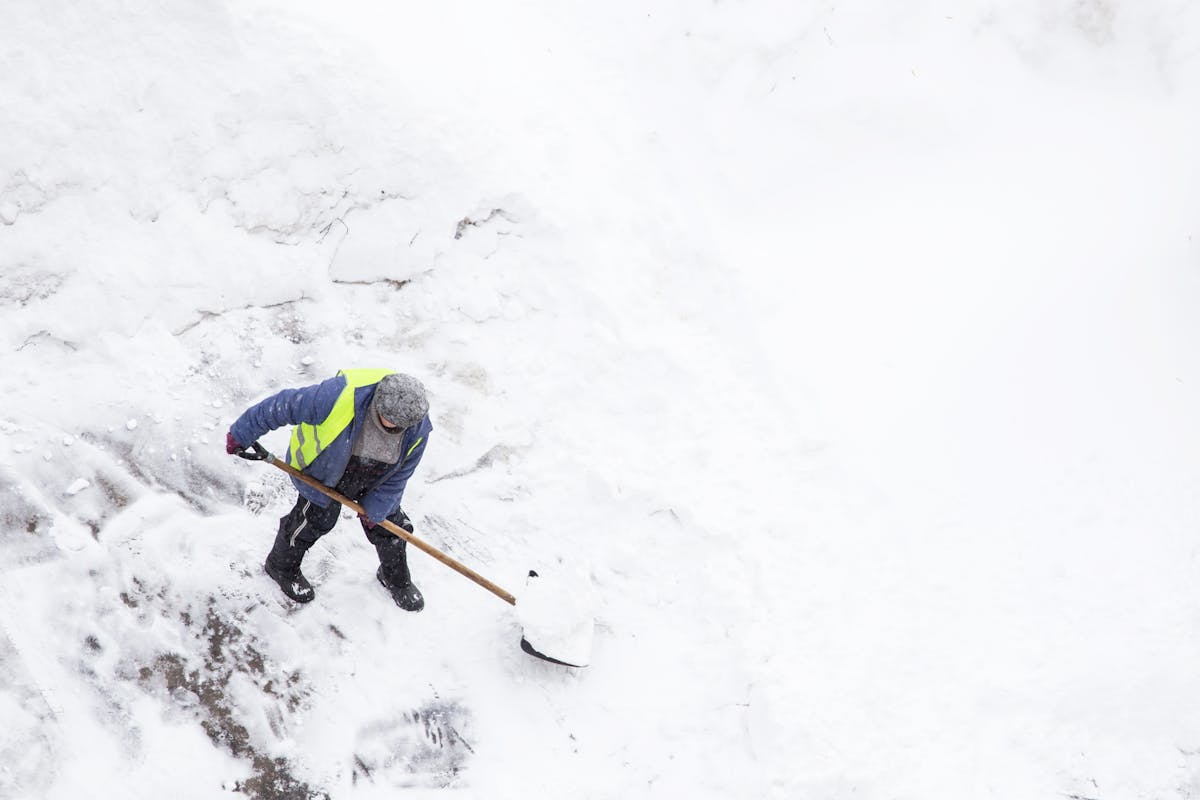Snow-Shoveling Safety Tips for Older Adults

Winter can be a beautiful time of year. Frost-covered trees and gently falling snow are pretty to look at. But for older adults, the season can also come with potential hazards, particularly when it comes to shoveling snow. As the snow accumulates, clearing driveways and sidewalks is an essential task, but it’s also a physically demanding one. It can lead to an injury or a health emergency, especially for those with certain health conditions or mobility issues.
That’s why learning more about snow-shoveling safety is a must for older adults. Here are some practical tips to help minimize the risks associated with shoveling snow.
Tips to Help Seniors Avoid Snow-Shoveling Injuries
- Know when to skip shoveling
Before picking up the shovel, assess the situation. If the snowstorm has left deep, heavy snow or if temperatures are dangerously low, consider skipping the task altogether. Heavy, wet snow is much harder to move and can strain the heart and muscles. In extreme cases, it can even lead to heart attacks. In fact, the American Heart Association says hundreds of people die of heart attacks caused by snow shoveling each year.
- Choose the right equipment
First, consider using a snow blower instead of a shovel. A snow blower significantly reduces the physical exertion required for snow removal. If you have frequent snowfalls and difficulty shoveling, it can be a worthwhile investment.
If you don’t have access to a snow blower, choosing the right snow shovel can make all the difference in reducing strain on your body. Look for a lightweight plastic shovel with a curved handle. This will allow you to maintain a more ergonomic posture while shoveling. Also, try to avoid shovels that are too long or too short, as they can cause you to strain your back or arms.
- Warm up your muscles first
Just as you would prepare for any physical activity, it’s important to warm up before shoveling snow. Stretching your back, arms, and legs can help reduce the risk of muscle strain and injuries. Focus on stretches that improve flexibility in your back and legs, and make sure to gently move through each stretch without pushing too hard. A quick 5- or 10-minute warm-up routine can increase blood flow and prepare your body for the task ahead.
- Don’t overdo it
Shoveling snow can be physically taxing, especially if you’re not used to the activity. Take frequent breaks to avoid overexertion, which can lead to heart problems and falls. Pace yourself, and don’t try to clear the entire area all at once. Work in smaller sections, and stop every 10 to 15 minutes to rest. If you feel winded or dizzy, head back inside to take a break.
Overexertion can also increase the risk of dehydration. Make sure to drink plenty of water while shoveling, even if you don’t feel thirsty. Dehydration can lead to fatigue and muscle cramps, increasing your risk of injury.
- Use safe lifting techniques
When shoveling snow, avoid bending at the waist to lift the snow. Instead, bend your knees and squat to lift the shovel, keeping your back straight. If the snow is too heavy, don’t try to lift it all at once. Instead, push the snow to one side and clear it in smaller amounts. Lifting heavy loads of snow improperly can strain your back and increase the risk of injury.
Additionally, avoid twisting your body when throwing snow to the side. Instead, use your legs to pivot while keeping your body in a straight line to prevent unnecessary strain on your back.
- Wear proper footwear
Proper footwear is essential when shoveling snow. Slip-and-fall accidents are common in icy conditions, and older adults are particularly vulnerable to serious injuries, such as fractures or sprains. Choose boots with nonslip soles that provide good traction. The boots should also be waterproof to keep your feet warm and dry, which is particularly important when shoveling for extended periods.
- Ask for help when needed
Finally, if shoveling snow starts to feel like too much for you, ask for help. Or consider hiring a snow-removal service to handle the job. Many communities offer snow-shoveling services for seniors, and some organizations provide volunteers for this purpose. Call the closest agency on aging to see if it keeps a list of resources that older adults can contact for assistance.
Invest in a Mobile Monitoring Unit
One more safety measure you can take when you’re shoveling snow is to invest in an emergency response system, such as the Life Protect 24/7 Mobile Monitoring Unit. You can slip one of these discreet devices into your coat pocket before you head outside. In the event that you do experience an emergency of some kind while shoveling, you can be connected to help with the simple press of a button. Call 1-844-203-5617 to learn more!